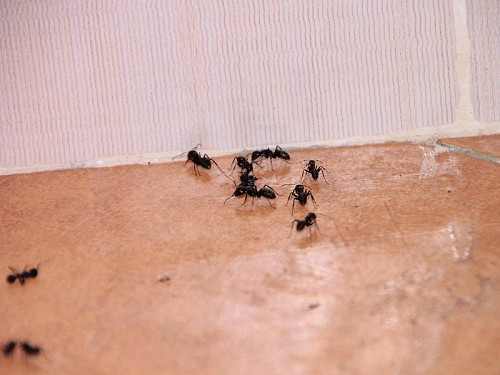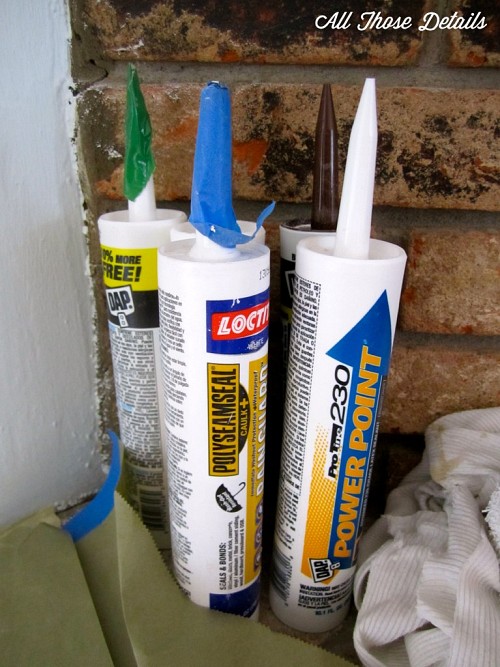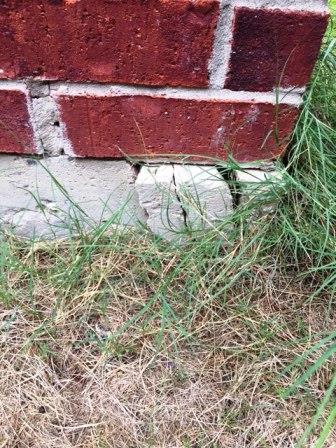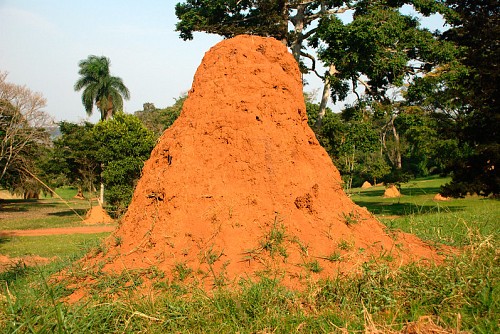Anthill Removal That I Found Easy And Effective
 My patio is a lively place. Last summer it kept me busy trying to get rid of pesky weeds between pavers. This year I'm facing the great anthill removal challenge.
My patio is a lively place. Last summer it kept me busy trying to get rid of pesky weeds between pavers. This year I'm facing the great anthill removal challenge.
Yes, even though the area where I live was unusually cold and dreary from March through May (which at least helped make isolating at home more tolerable), spring has finally sprung. In fact, it’s sprung straight into summer, without passing Go.
And instead of a cute little robin or two, the change of season was announced the other day by an all-out ant invasion. There must have been fifty or more of the critters, wriggling merrily around the base of my kitchen island.
I'd seen so many ants in one place only once before, and that time my immediate reaction was to call for professional pest control.
Now, however, I decided to be a little braver and figure out where they were all coming from.
When I headed outdoors, the answer was apparent. All along the seam where my patio meets the exterior concrete wall were new little mounds of sand.
That meant anthills, lots and lots of anthills. I get very nervous at any holes threatening my foundation, even teeny tiny ones. Anthill removal was obviously called for.
So I methodically did my research and then tried the results out in real life acted on intuition, AKA an educated guess. To my happy surprise, it worked.
Tada! Anthill removal accomplished. Here’s how I did it.
- Swept away the evidence. Now, I know a basic principle of home improvement is “Don’t focus only on surfaces; fix the problem at its source.” But there was something so satisfying in sweeping up those sandy anthill mounds. Besides, it prepared the way for Step 3.
- Consulted Google, then rejected the suggestions. Besides threats to my foundation, another thing that makes me nervous is online anything – be it home maintenance tips or dinner recipes – that demands ingredients I don’t usually have on hand. (Asafoetida? Sorry, not in my spice rack.)
This holds especially true in coronavirus-hobbled times, as ordering from Amazon begins to feel increasingly unpredictable.
That’s why I had to rule out diatomaceous earth and boric acid as potential anthill removers. - Recycled a previously successful solution. My quick trick to get rid of weeds between pavers was so successful that I decided to try it again – with a new tweak. To the original method (dousing the culprits with boiling water), I added a generous spritz of dishwashing liquid for good measure.
- Got rid of ants inside my home. That took care of the anthills but I was still left with ants crawling around indoors. I sprayed them with a 1:1 solution of white vinegar and water.
That wonder substance, ordinary household vinegar, is toxic to ants. Not only does it kill them, it repels any ants that might think about dropping by your home in the future.
CAVEAT: Vinegar, while safe to spray on ceramic tile floors or vinyl flooring, could damage marble and other stone. - Blocked ant entry points. No, despite what you may read on the internet, ants do NOT chew through concrete.
Although carpenter ants do feed on wood and can seriously harm the structure of a building, here it seemed I was looking at a species known as pavement ants, also called sugar ants in some parts of the country.
These critters are capable of entering a house via the foundation -- but only through already-existing crannies. Following Michigan State U College of Agriculture & Natural Resources advice, I caulked wall cracks from the inside to keep out ants. - Started planning DIY concrete repair. Added to my ever-growing list of home handyman (er ... handywoman?) projects is a little do-it-yourself concrete repair. I’ve got big plans to try my hand at patching those minuscule foundation cracks ... just as soon as I can get my hands on all the supplies I’ll need.
DO try this at home. The substances described, while dangerous to ants, are safe for humans and pets.
On the other hand, if you don’t happen to be the DIY type or you’re faced with a major infestation, you might prefer to hire an exterminator for professional anthill removal.
Laura Firszt writes for networx.com.
Related Articles
Looking for a Pro? Call us (866) 441-6648

Pest control Average Costs
Exterminators Experiences

Paving My Driveway Was An Easy And Pleasant Experience

My Deck Repair Was Simple But Perfect







